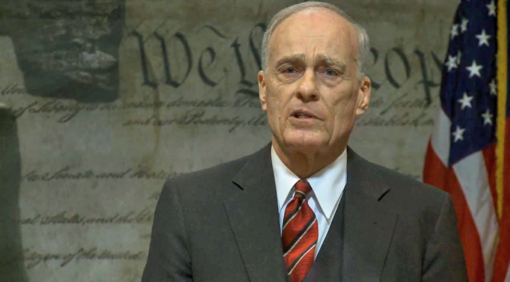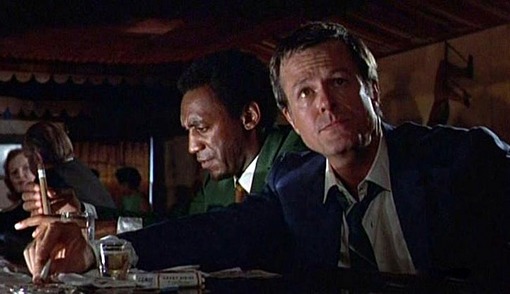Latest Contrarian Week News:
In his New York Observer year-end wrap-up (and ten-best list), Andrew Sarris attempts to steal the thunder of one of his New York “alternative weekly” rivals.
Sarris writes:
Fortunately, modern technology makes it almost impossible for a good movie to get “lost” because of end-of-the-year mental exhaustion. So, with the proviso that I still have a great deal of catching up to do, here are my considered choices for the various 10-best categories, and one of my patented 10-worst lists under the provocative heading of “Movies Other People Liked and I Didn’t.” I am not at all deterred in dishing out my annual supply of negativity by the correspondent who informed me last year that he preferred all the films on my 10-worst list to all the films on my 10-best list. I have long ago become resigned to my fate as a reviled revisionist ever since my first column in The Village Voice in 1960 hailed Alfred Hitchcock as a major artist for “Psycho,” and inspired more hate mail than any Voice column had received up to that time. That clinched my job at the ever-contrarian Voice, and I have simply gone on from there.So, how contrarian is the “reviled revisionist” 46 years later? Let’s see:
“The Departed” as best film of the year. (Only in New York!)
“Blood Diamond” as #5.
Best Supporting Actresses:
1) Jennifer Connelly, “Blood Diamond”
2) Gong Li, “Miami Vice”
3) Maggie Gyllenhaal, “World Trade Center”
And then there’s this:
Other striking male performances were provided by: Leonardo DiCaprio, Matt Damon, Mark Wahlberg, Martin Sheen, Ray Winstone, Alec Baldwin and Anthony Anderson in The Departed; Edward Norton, Liev Schreiber and Toby Jones in The Painted Veil; Wim Willaert in When the Sea Rises; Leslie Phillips and Richard Griffiths in Venus; Clive Owen, Denzel Washington, Christopher Plummer, Willem Dafoe, and Chiwetel Ejiofor in Inside Man; Ken Watanabe, Kazunari Ninomiya, Tsuyoshi Ihara, Ryo Kase and Shido Nakamura in Letters from Iwo Jima; Greg Kinnear, Steve Carell, Alan Arkin and Paul Dano in Little Miss Sunshine; Edward Norton, Paul Giamatti and Rufus Sewell in The Illusionist; Patrick Wilson, Jackie Earle Haley, Noah Emmerich, Gregg Edelman and Ty Simpkins in Little Children; Keanu Reeves, Christopher Plummer and Dylan Walsh in The Lake House; Nicolas Cage, Michael Pena and Stephen Dorff in World Trade Center; Tim Blake Nelson, Pat Corley, Jeffrey Donovan, Stacy Keach and Scott Wilson in Come Early Morning; Ryan Gosling and Anthony Mackie in Half Nelson; Jason Schwartzman, Rip Torn, and Danny Huston in Marie Antoinette; Matt Damon, Michael Gambon, Alec Baldwin, William Hurt, Billy Crudup, Robert De Niro, Keir Dullea, Timothy Hutton, Eddie Redmayne, Mark Ivanir and Joe Pesci in The Good Shepherd; Hugh Jackman, Patrick Stewart, Ian McKellen, Kelsey Grammer, James Marsden, Shawn Ashmore, Aaron Stanford, Vinnie Jones and Ben Foster in X-Men: The Last Stand; Mads Mikkelsen, Jeffrey Wright, Giancarlo Giannini, Simon Abkarian, Sebastien Foucan, Jesper Christensen and Tobias Menzies in Casino Royale; Ebru Ceylan and Mehmet Eryilmaz in Climates; Adrien Brody, Ben Affleck and Bob Hoskins in Hollywoodland; Jamie Foxx, Danny Glover, Keith Robinson and Hinton Battle in Dreamgirls; Brian O’Halloran, Jeff Anderson, Jason Mewes, Trevor Fehrman, Kevin Smith and Jason Lee in Clerks II; Justin Kirk and Jamie Harrold in Flannel Pajamas; Stanley Tucci, Simon Baker and Adrian Grenier in The Devil Wears Prada; Will Ferrell, Dustin Hoffman and Tom Hulce in Stranger Than Fiction; Samuel L. Jackson, Curtis Jackson, Chad Michael Murray, Sam Jones III and Brian Presley in Home of the Brave; Harris Yulin, Ty Burrell and Boris McGiver in Fur: An Imaginary Portrait of Diane Arbus; Max Minghella, John Malkovich, Jim Broadbent, Matt Keeslar, Ethan Suplee, Joel David Moore and Nick Swardson in Art School Confidential; Joseph Cross, Brian Cox, Joseph Fiennes and Alec Baldwin in Running with Scissors; Jamie Foxx, Colin Farrell, Ciarán Hinds, Justin Theroux, Barry Shabaka Henley, Luis Tosar and John Ortiz in Miami Vice; Michael Sheen, James Cromwell, Alex Jennings, Roger Allam and Tim McMullan in The Queen; Samuel L. Jackson, Ron Eldard, William Forsythe, Anthony Mackie, Marlon Sherman and Clarke Peters in Freedomland; Vin Diesel, Peter Dinklage, Linus Roache, Alex Rocco, Ron Silver and Raul Esparza in Find Me Guilty; Josh Hartnett, Bruce Willis, Stanley Tucci, Morgan Freeman and Ben Kingsley in Lucky Number Slevin; Hugh Grant, Dennis Quaid, Chris Klein, Shohreh Aghdashloo, John Cho, Tony Yalda, Sam Golzari and Willem Dafoe in American Dreamz; Keanu Reeves, Robert Downey Jr., Woody Harrelson and Rory Cochrane in A Scanner Darkly; Adam Beach, Ryan A. Phillippe, Jesse Bradford, John Benjamin Hickey, Jon Slattery, Barry Pepper, Jamie Bell, Paul Walker and Robert Patrick in Flags of Our Fathers; Chow Yun-Fat in Curse of the Golden Flower; Sergi López, Doug Jones, Álex Angulo and Federico Luppi in Pan’s Labyrinth; Bill Nighy in Notes on a Scandal.Take that, A—– W—-!
December 14, 2012





